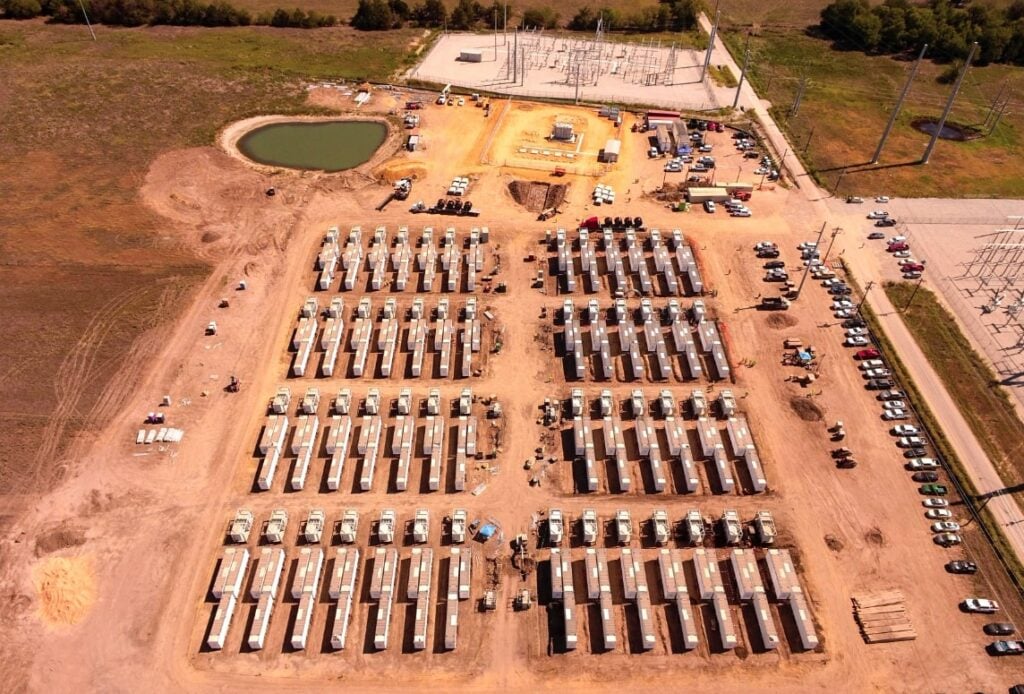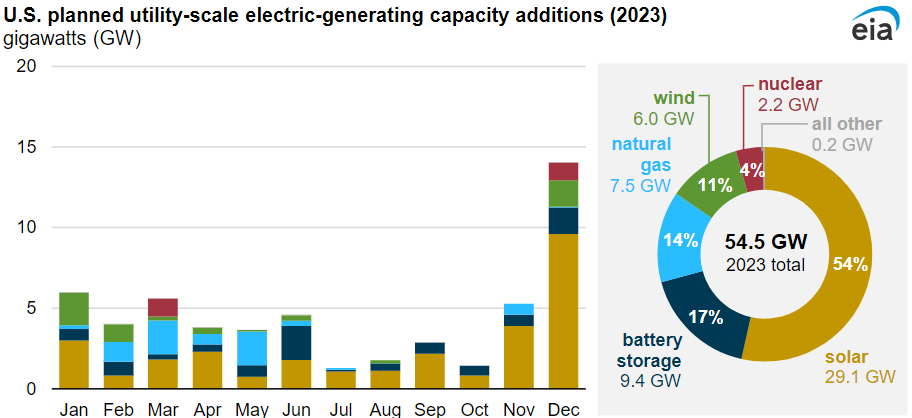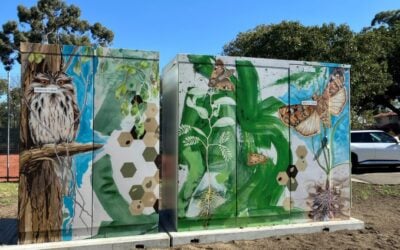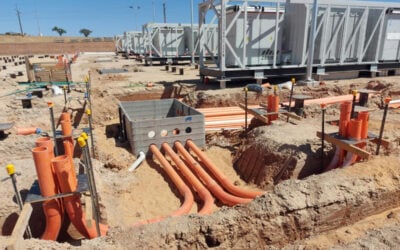
The US’ installed base of large-scale battery storage systems is expected to double in megawatt terms during 2023, according to the country’s Energy Information Administration (EIA).
The principal federal agency for gathering statistics on energy published a brief outlook for the year ahead in its regular monthly snapshot of the US electric generation fleet, the Preliminary Monthly Electric Generator Inventory.
Enjoy 12 months of exclusive analysis
- Regular insight and analysis of the industry’s biggest developments
- In-depth interviews with the industry’s leading figures
- Annual digital subscription to the PV Tech Power journal
- Discounts on Solar Media’s portfolio of events, in-person and virtual
Among its findings, as reported by our colleagues over at PV Tech yesterday, were that solar PV will account for more than half of all new generation (54%), of a total of 54.5GW to be added from all technologies, in 2023. That’s after a tough year in 2022 when new utility-scale solar additions declined by 23% year-on-year due to factors including supply chain disruptions.
Developers could add 29.1GW of new solar PV this year if most or all of 2022’s delayed projects are finalised. Solar’s strongest year on record was 2021, when 13.4GW was added.
Battery storage meanwhile has an installed base of about 8.8GW of operational assets, and in 2023, a further 9.4GW is expected to be added.
California and Texas are the two states which will see the highest amount of solar PV added this year, and will also see the most new battery storage.
About 41% of new solar PV will be in the two states, and so will about 71% of new battery additions, driven on by the growth of the former – as well as wind for which Texas will be the biggest region in 2023 with an expected 2GW of new additions.

Back in December, EIA data expert Suparna Ray wrote that the “remarkable growth” in battery storage capacity is happening even faster than solar’s did, noting that from less than a gigawatt of PV in 2010, the US reached 13.7GW in 2015.
Whereas from 1.5GW of battery energy storage system (BESS) installations in 2020, the EIA is forecasting growth to 30GW by 2025. Indeed, BESS capacity has grown by a gigawatt since October 2022 alone.
Those projections sound big, but are perhaps unlikely to come as a surprise after all, given that the EIA found that energy storage installations had in fact tripled during 2021, from 1,438MW in 2020 to 4,631MW, increasing by 3,202MW across 106 newly-commissioned utility-scale BESS projects.
Energy-Storage.news’ publisher Solar Media will host the 5th Energy Storage Summit USA, 28-29 March 2023 in Austin, Texas. Featuring a packed programme of panels, presentations and fireside chats from industry leaders focusing on accelerating the market for energy storage across the country. For more information, go to the website.






